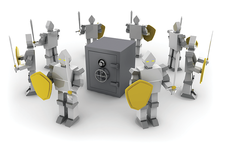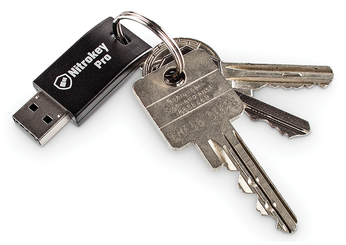Securely encrypt passwords with Nitrokey Pro 2
Locked

The Nitrokey Pro 2 is a small device that covers a wide range of cryptographic functions.
The small and inconspicuous Nitrokey Pro 2 is a digital door opener: You can use the Nitrokey's password safe to securely lock up your access credentials, and you can generate one-time passwords for more secure logins to online services. An integrated OpenPGP card lets you encrypt and sign emails. (See the article on the OpenPGP smartcard starting on p. 18 in this issue.)
You can purchase the Nitrokey Pro 2 for around EUR50 via the manufacturer's online shop [1] (Figure 1). The online shop is also where you will find the Nitrokey Storage 2, which provides the same functions as the Nitrokey Pro 2 but also includes encrypted storage capacity ranging from 16 to 64GB. Depending on how much storage you need, the Nitrokey Storage 2 costs somewhere between EUR109 and EUR199.
 Figure 1: Use the Nitrokey Pro 2 like an OpenPGP smartcard. You can also generate one-time passwords and store access credentials. If you opt for the Nitrokey Storage 2, you will have access to encrypted storage of up to 64GB. © Nitrokey GmbH
Figure 1: Use the Nitrokey Pro 2 like an OpenPGP smartcard. You can also generate one-time passwords and store access credentials. If you opt for the Nitrokey Storage 2, you will have access to encrypted storage of up to 64GB. © Nitrokey GmbH
[...]
Buy this article as PDF
(incl. VAT)
Buy Linux Magazine
Subscribe to our Linux Newsletters
Find Linux and Open Source Jobs
Subscribe to our ADMIN Newsletters
Support Our Work
Linux Magazine content is made possible with support from readers like you. Please consider contributing when you’ve found an article to be beneficial.

News
-
Two New Distros Adopt Enlightenment
MX Moksha and AV Linux 25 join ranks with Bodhi Linux and embrace the Enlightenment desktop.
-
Solus Linux 4.8 Features Removes Python 2
Solus Linux 4.8 has been released with the latest Linux kernel, updated desktops, and a key removal.
-
Zorin OS 18 Hits over a Million Downloads
If you doubt Linux isn't gaining popularity, you only have to look at Zorin OS's download numbers.
-
TUXEDO Computers Scraps Snapdragon X1E-Based Laptop
Due to issues with a Snapdragon CPU, TUXEDO Computers has cancelled its plans to release a laptop based on this elite hardware.
-
Debian Unleashes Debian Libre Live
Debian Libre Live keeps your machine free of proprietary software.
-
Valve Announces Pending Release of Steam Machine
Shout it to the heavens: Steam Machine, powered by Linux, is set to arrive in 2026.
-
Happy Birthday, ADMIN Magazine!
ADMIN is celebrating its 15th anniversary with issue #90.
-
Another Linux Malware Discovered
Russian hackers use Hyper-V to hide malware within Linux virtual machines.
-
TUXEDO Computers Announces a New InfinityBook
TUXEDO Computers is at it again with a new InfinityBook that will meet your professional and gaming needs.
-
SUSE Dives into the Agentic AI Pool
SUSE becomes the first open source company to adopt agentic AI with SUSE Enterprise Linux 16.

